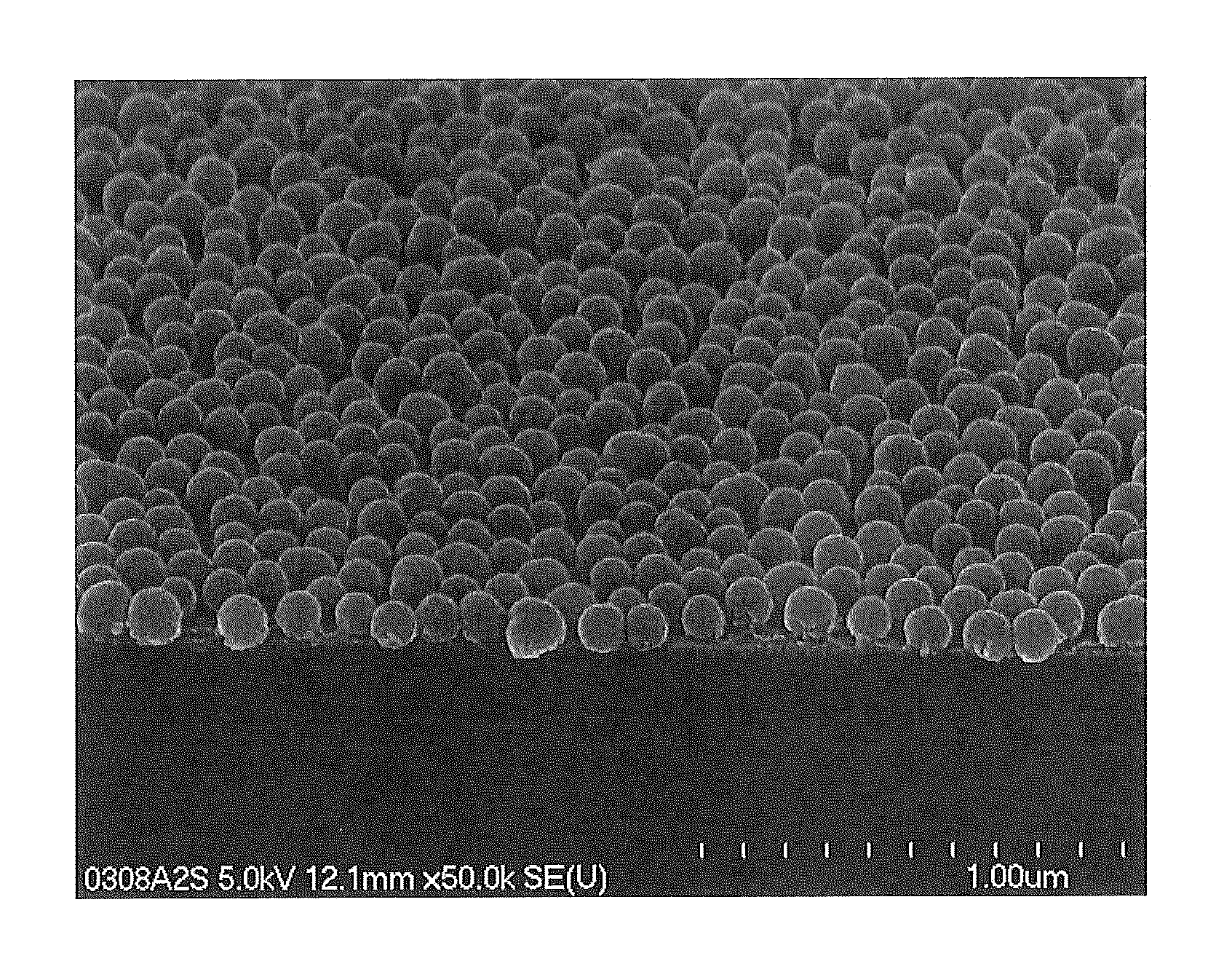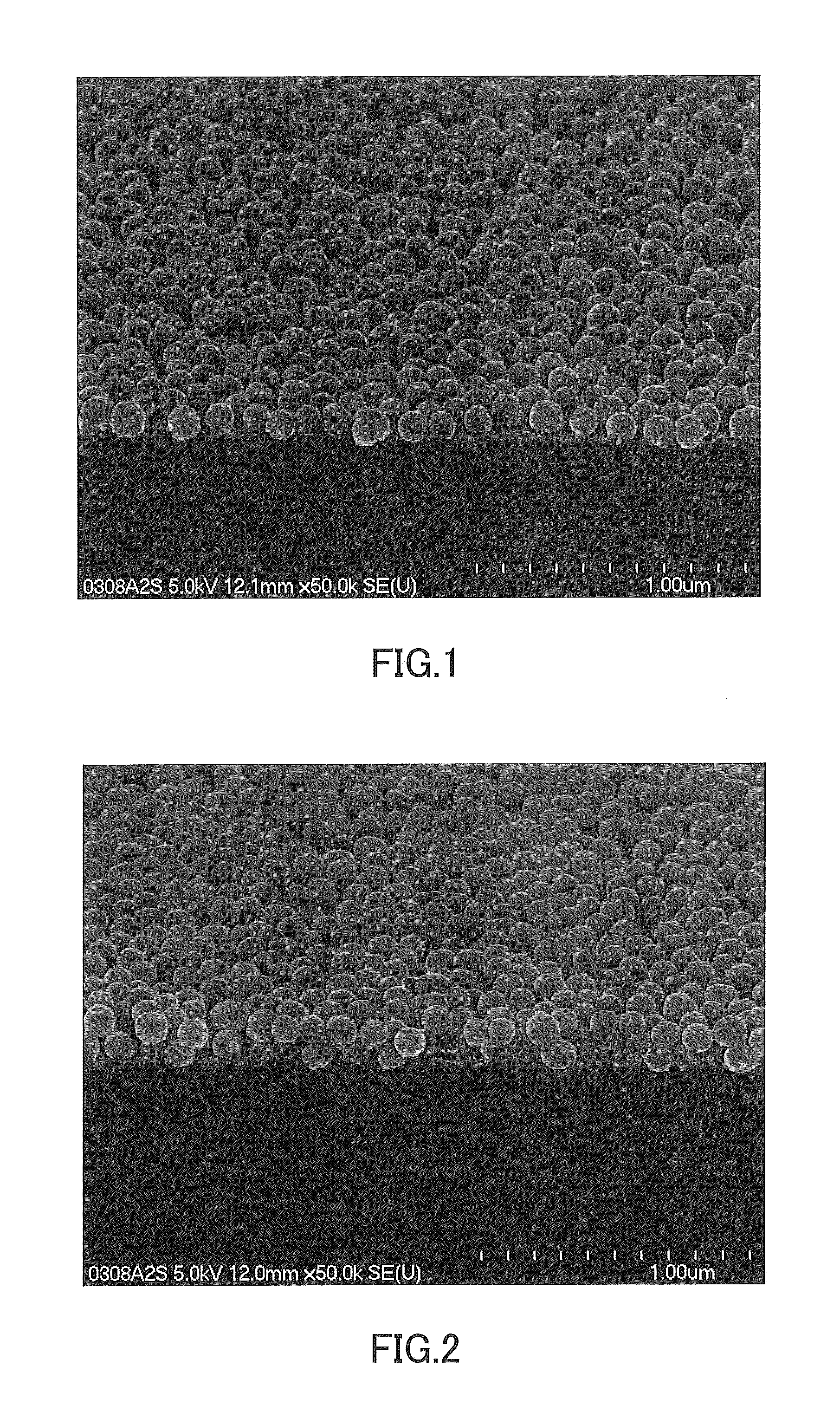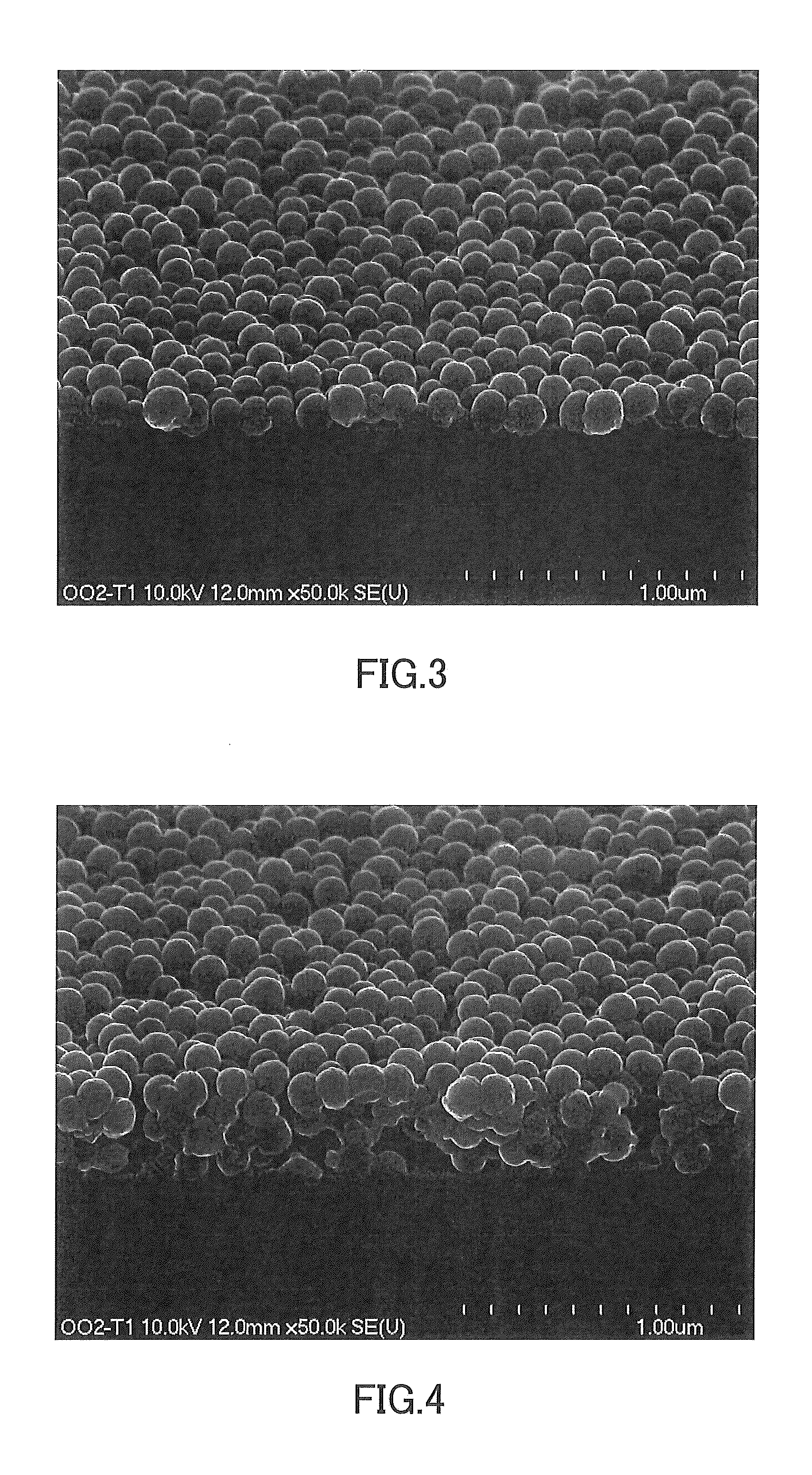Cover glass for photoelectric conversion device
a technology of photoelectric conversion device and cover glass, which is applied in the direction of sustainable buildings, transportation and packaging, instruments, etc., can solve the problems of annoyance of neighboring houses and significant deterioration of appearance, and achieve the effect of high transmittance gain
- Summary
- Abstract
- Description
- Claims
- Application Information
AI Technical Summary
Benefits of technology
Problems solved by technology
Method used
Image
Examples
example 1
Preparation of Coating Liquid
[0072]An amount of 39.1 parts by weight of a fine silica particle dispersion liquid (PL-7, manufactured by FUSO CHEMICAL CO., LTD., average particle diameter=100 nm, solid content concentration=23 weight %), 56.4 parts by weight of ethyl cellosolve, and 1 part by weight of 1N hydrochloric acid (hydrolysis catalyst) were stirred and mixed. Under further stirring, 3.5 parts by weight of tetraethoxysilane was added to the mixture, which was then stirred for further 8 hours with its temperature maintained at 40° C. Thus, a raw material liquid was obtained. In this raw material liquid, the solid content concentration was 9 weight %, and the ratio by weight of the fine particles to the binder (in terms of oxide content) in the solid contents was 90:10. It should be noted that the fine silica particles were solid (i.e., non-hollow) fine particles.
[0073]A coating liquid was obtained by stirring and mixing 11 parts by weight of the raw material liquid, 10.0 parts...
example 2 to example 8
[0077]Cover glasses according to Comparative Examples 2 to 8 were obtained in the same manner as in Example 1, except that the proportions of the materials for preparing the raw material liquid and the coating liquid, and the conditions for forming the reflection-reducing film (conditions for drying and conditions for calcining), were as shown in Table 2. In Example 3 and Example 4, as shown in Table 2, “CoatOSil 3505” manufactured by Momentive Performance Materials Japan LLC was used as the silicon-based surfactant. The thus-obtained cover glasses according to Examples 2 to 8 were evaluated for the above-described properties. The results of the evaluation are shown in Table 1.
PUM
| Property | Measurement | Unit |
|---|---|---|
| arithmetic average roughness Ra | aaaaa | aaaaa |
| arithmetic average roughness Ra | aaaaa | aaaaa |
| arithmetic average roughness Ra | aaaaa | aaaaa |
Abstract
Description
Claims
Application Information
 Login to View More
Login to View More - R&D
- Intellectual Property
- Life Sciences
- Materials
- Tech Scout
- Unparalleled Data Quality
- Higher Quality Content
- 60% Fewer Hallucinations
Browse by: Latest US Patents, China's latest patents, Technical Efficacy Thesaurus, Application Domain, Technology Topic, Popular Technical Reports.
© 2025 PatSnap. All rights reserved.Legal|Privacy policy|Modern Slavery Act Transparency Statement|Sitemap|About US| Contact US: help@patsnap.com



